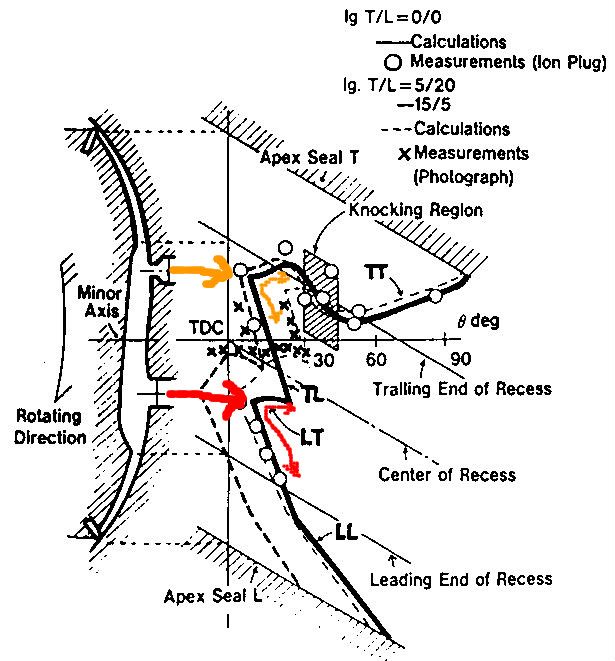Quote:
Originally Posted by NoDOHC

Sorry about the confusion, I thought the same thing that others did, this was a simple transducer installed in the leading spark plug hole.
From what I have seen, there is more available power by building that peak pressure earlier in the cycle. If you are seeing detonation with earlier pressure peaks, 45 degrees is what you get. (This really isn't too bad, at is equates to 30 degrees on a piston engine. As I recall, 12-15 degrees is the sweet spot for peak cycle efficiency (on a piston engine). The rotary may be different.
Actually, now that I think about it, the rotary has a longer combustion chamber and probably requires longer for the flame to propagate. This may mean that the pressure will spike too quickly is it is initiated any sooner, while taking too long to propagate if initiated at this time.
Anyway, I hope that you are planning to analyze the effects of leading/trailing split. Some claim that it makes a big difference, I found no change on the dyno at all for pretty much the entire test.
In fact, I unplugged the trailing plugs and saw no change under 6,000 rpm.
|
NoDOHC, I think flame speed should be our main focus (actually exhaust reversion is the area we can make the most gains).
There are a lot of concepts to interrelate when considering what is going on inside of a rotary engine.
This is from a Mazda paper Rotary86v6a4, Fig. 14, showing flame propagation.
I think this is probably Mazda Research at its best!
If you haven't seen it before please take your time trying to understand it.

Some things to note:
Because the mixture is flowing the flame front hardly moves upstream at all. In fact the trailing portions of both flame patches are pushed backwards part of the time.
The squish generation and trench shape further complicates this movement.
When the leading and trailing flame fronts collide (at about 20º ATDC) that their speed diminishes.
The knock region is from 30º - 45º ATDC and where the knock sensor is located.
Barry